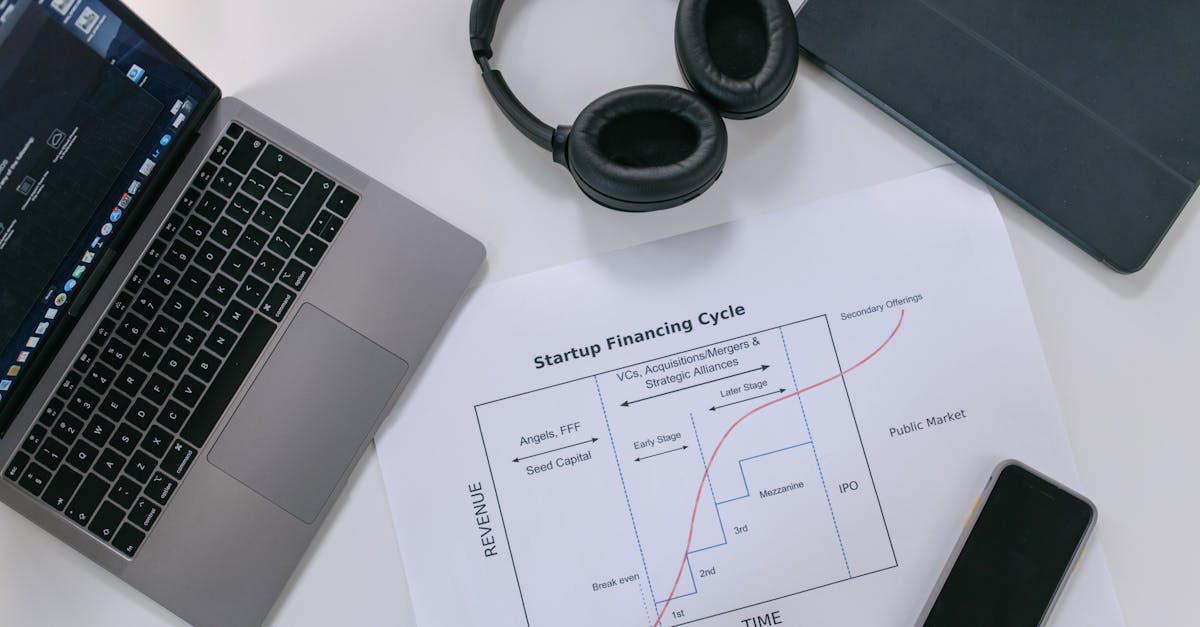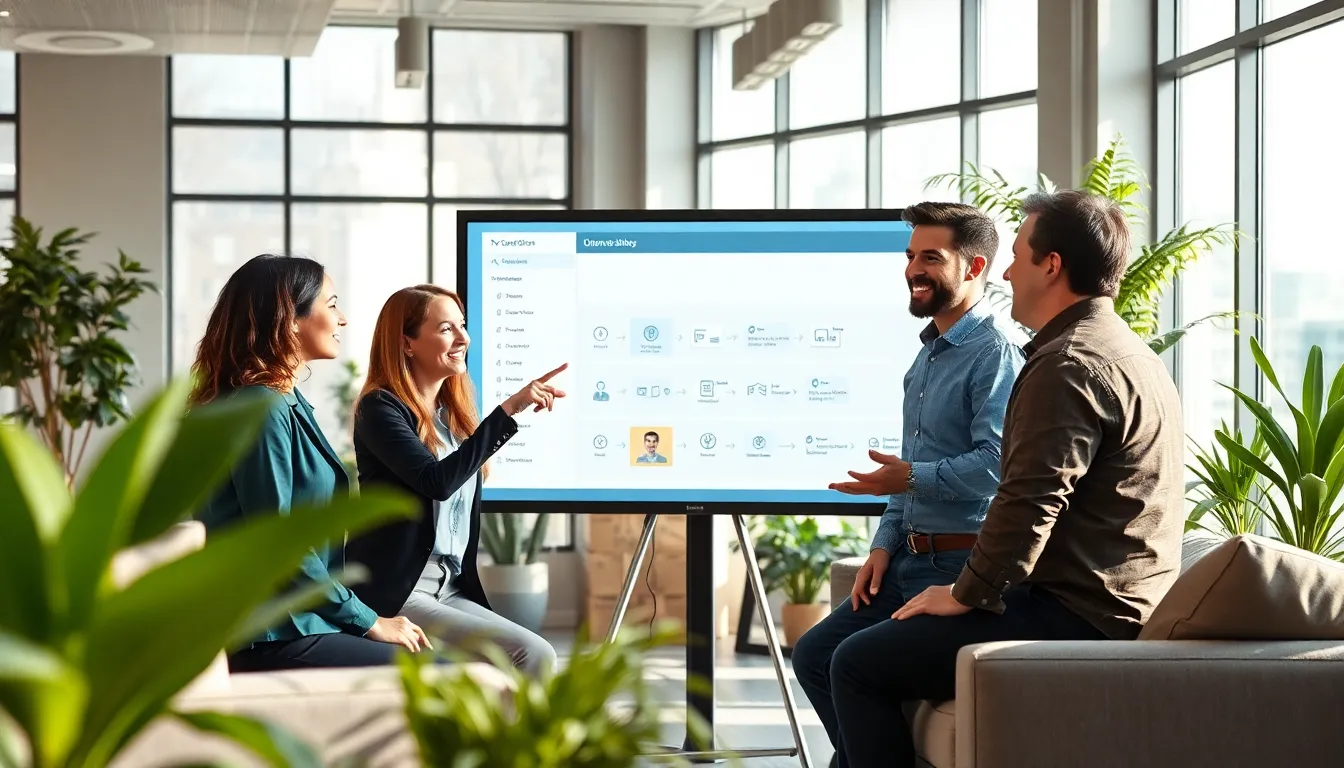In a world where attention spans are shorter than a cat video, animations have become the secret sauce for grabbing and holding interest. No-code platforms have stepped in like superheroes, making it easier than ever to sprinkle some motion magic into projects without a PhD in computer science. Who knew that creating eye-catching animations could be as simple as dragging and dropping?
Imagine transforming dull static content into lively visuals that dance across the screen. With no-code tools, anyone can unleash their inner animator, turning ideas into engaging experiences. Whether it’s a snazzy button that wiggles or a character that waves hello, the possibilities are endless. So buckle up, because diving into the world of animations in no-code is about to get exciting—and maybe a little silly. After all, who doesn’t want their website to have a little personality?
Table of Contents
ToggleOverview of Animations in No-Code
Animations play a significant role in enhancing digital content. They provide a visual appeal that engages users and encourages interaction. No-code platforms streamline the process of creating animations. Anyone can use simple tools to develop dynamic visuals that captivate audiences instantly.
A variety of animations exists for different applications. Transitions, hover effects, and loading animations are just a few examples. Each type serves a specific purpose, enhancing user experience significantly. For instance, transitions can smoothen the movement between different app states, making navigation seamless. Hover effects can draw attention to interactive elements, guiding users toward key actions.
Furthermore, no-code platforms provide extensive libraries of pre-built animations. These libraries enable users to experiment with different styles and effects quickly. Customization also features prominently, allowing users to tweak animations to match their brand identity. Adjusting speed, direction, and trigger events further personalizes animations to meet specific project needs.
The integration of animations goes beyond aesthetics. They can effectively convey messages, making complex information easier to digest. For example, animated infographics present data in an engaging way, enhancing retention and understanding. Such functionalities underscore the versatility of animations in no-code environments.
Users find that implementing animations in their projects is both fun and rewarding. Many report an uptick in user engagement and positive feedback after adding animations. As no-code platforms evolve, the capabilities to integrate animations continue to expand. Embracing these tools allows for the creation of rich, interactive experiences that stand out in today’s competitive digital landscape.
Importance of Animations in No-Code Development
Animations play a crucial role in improving the user experience and enhancing engagement within no-code development. Their ability to transform static content into vibrant visuals captures attention and invites interaction.
Enhancing User Experience
Animations contribute significantly to user experience by guiding users through digital interfaces. Visual cues help users understand transitions and navigate content effortlessly. Fluid animations deliver a sense of continuity, making interactions feel natural and intuitive. Pre-built animations from no-code platforms enable users to select those that best match their goals, which aids in maintaining brand consistency. Animated feedback, like button presses or form submissions, can impart clarity, confirming users’ actions. Enhanced usability results in a more satisfying experience for users, making websites not only functional but enjoyable.
Promoting Engagement
Engaging animations encourage users to interact more with content. When utilized effectively, animations draw attention to key features, prompting users to explore further. Attention-grabbing effects, such as hover animations, can reveal hidden information or calls to action, increasing click-through rates. Users tend to spend more time on sites that incorporate eye-catching animations, resulting in longer session durations. Surveys indicate that incorporating animations leads to positive user feedback and increases retention rates. No-code platforms allow users to tailor animations to specific audiences, ultimately boosting engagement and creating a more memorable experience.
Popular No-Code Platforms for Animations
Several no-code platforms simplify the process of creating engaging animations, making them accessible for users at any skill level. Each platform brings unique features and benefits.
Platform A Features and Benefits
Platform A offers an intuitive interface that allows users to create animations through drag-and-drop functionality. Extensive libraries of pre-built templates streamline the animation process, saving time and effort. Users can also customize animations to align with their branding. Integration options with other tools enhance the overall functionality, enabling seamless workflows. Real-time previews help users visualize changes instantly, ensuring a more efficient creation process.
Platform B Features and Benefits
Platform B stands out with its powerful animation tools that cater to both beginners and advanced users. A rich selection of tutorials guides newcomers through the animation process. Customization options offer extensive flexibility, allowing users to tweak every detail. Collaborative features enable team members to work together, streamlining the design process. The platform supports various export formats, ensuring animations look great across all devices.
Platform C Features and Benefits
Platform C provides unique features such as interactive animations that respond to user interactions. Simple integration with popular web development tools makes the platform versatile for various projects. An extensive animation library includes diverse styles, catering to different project needs. Users benefit from real-time feedback that enhances their design decisions. Additionally, analytics tools provide insights into how animations impact user engagement, helping optimize future projects.
Best Practices for Creating Animations in No-Code
Creating effective animations in no-code platforms involves strategy and clarity. Focusing on best practices maximizes engagement and user experience.
Keeping It Simple
Simplicity is vital when designing animations. Clear animations communicate ideas without overwhelming users. Using minimal effects, such as subtle fade-ins or slide transitions, enhances usability. Complicated animations can distract or confuse. Users appreciate animations that enhance navigation rather than hinder it. Prioritize brevity in animated sequences; concise animations convey messages quickly. Tools available in no-code platforms often support clean, simple designs. Experimenting with fewer elements raises focus on essential content. Aim for consistency throughout to reinforce brand identity.
Ensuring Accessibility
Accessibility plays a critical role in animation design. Users with various needs should enjoy a seamless experience. Providing alternative text descriptions for animations enhances understanding. Color contrast in animations must be sufficient for readability. Animations should include options to pause, stop, or hide, allowing users control. Testing animations across diverse devices and browsers ensures widespread compatibility. Employing industry standards, like WCAG guidelines, aids in creating accessible content. Accessibility should never be an afterthought, as inclusive designs improve overall user satisfaction. Each animation choice should consider its impact on all users, creating an inviting digital space.
Future Trends in No-Code Animations
No-code animations are set to transform the digital landscape significantly. Increased accessibility through advanced no-code platforms encourages widespread adoption among creators, regardless of technical skill. Enhanced libraries of animations allow users to experiment with various styles, ensuring brand personalization becomes effortless.
User engagement continues to evolve, with interactive and immersive animations drawing attention in innovative ways. Data indicates that websites with dynamic elements outperform static sites in user retention metrics. The demand for real-time updates creates a trend where animations will adapt based on user interactions, leading to unique experiences for each visitor.
Artificial intelligence integration streamlines the animation process. AI tools are increasingly able to suggest animations based on user behavior, making it easier to create tailored content. Personalized animations not only captivate users but also increase conversion rates.
Mobile optimization emerges as a critical factor in animation development. As mobile usage rises, animations must perform smoothly on smaller screens. Developers are prioritizing responsive design, ensuring animations maintain quality and appeal across various devices.
Collaboration features in no-code platforms will gain more attention. Designers and developers benefit from shared resources and iterative feedback processes, leading to improved animation quality. Communities surrounding these platforms are likely to expand, fostering knowledge sharing and inspiring innovative animation methods.
Sustainability will also play a role in future no-code animations. Users are becoming more conscious of energy consumption and load times. Optimized animations that reduce resource demand while enhancing user experience will become essential in design strategies.
No-code animations are heading toward a more interactive and personalized future. As these trends unfold, creators will leverage new technologies to craft engaging, user-focused experiences that capture audience attention and facilitate deeper connections.
Conclusion
The rise of animations in no-code platforms is transforming how users engage with digital content. By simplifying the animation creation process, these platforms empower individuals to enhance their projects without technical barriers. The ability to create dynamic visuals not only captivates audiences but also fosters interaction and improves user experience.
As the landscape evolves, the integration of advanced features will further enrich the animation capabilities available to creators. Embracing these tools can lead to more engaging and memorable digital experiences. With a focus on accessibility and user-centric design, animations will continue to play a pivotal role in shaping the future of online interactions.





